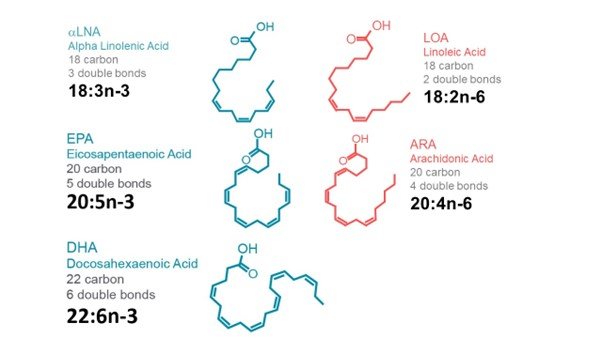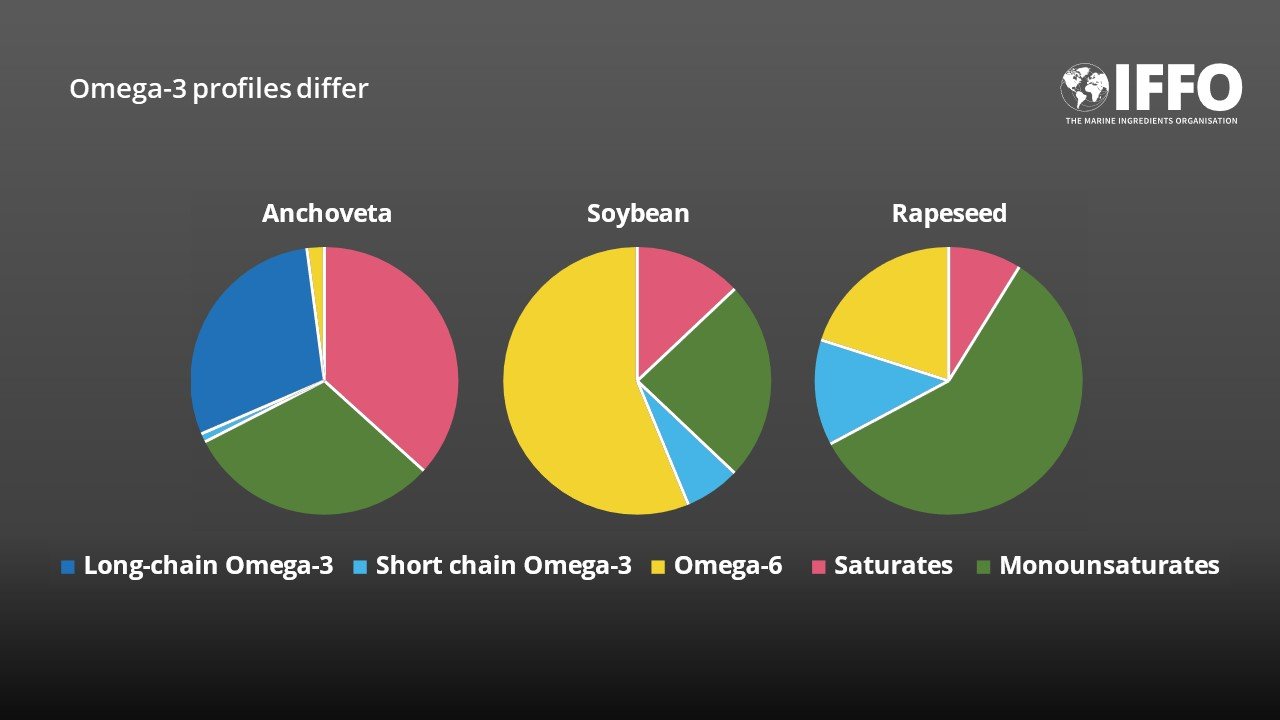This piece was first published in the May 2022 edition of FishFirst, the Chinese trade media outlet.
Author: Dr Brett Glencross
Over the past thirty years we have seen huge growth in the omega-3 story. Scientific studies show a suite of benefits of this wonder-nutrient, from improved brain development to better cardiovascular health and better inflammatory response management by the immune system to name a few. However, what actually are these omega-3 nutrients, and are they all equal in their value?
WHAT ARE OMEGA-3’s?
Omega-3’s are a type fat that is referred to as a fatty acid. These fatty acids are long chains of carbon and hydrogen, with the occasional oxygen molecule as well. They vary not only by the number of carbon atoms in the chain, but also by the nature of some of the chemical bonds between the carbon atoms. Both chemical parameters influence the reactivity of the fatty acids to different things. Variation in the chemical bond parameter causes what we term unsaturation (compared to saturation). A chain with none of these variant bonds is called a saturated fatty acid (SFA). A chain with one of these bonds is called a monosaturated fatty acid (MUFA), and a chain with two or more of these bonds is called a polyunsaturated fatty acid (PUFA). Furthermore, where those bonds occur in the carbon chain affects their reactivity too. When the first of the variant bonds is three carbons from the end of the fatty acid chain, we call that an omega-3 fatty acid. If the first of the variant bonds is six carbons from the end of the fatty acid chain, we call that an omega-6 fatty acid. Because of this chemical complexity it is possible to have fatty acids of different chain lengths and with different levels of unsaturation and with varying positioning of the variant bonds. So, a carbon chain of 18-carbons, with two unsaturated bonds is what we call a short-chain PUFA, whereas a carbon chain of ≥20-carbons, with two unsaturated bonds is what we call a long-chain PUFA (Figure 1). For both PUFA chain types we can get omega-3 and omega-6 forms.
THE LONG AND THE SHORT
Biological organisms have different kinds of fatty acids in them, with a combination of the various SFA, MUFA and PUFA generally found. However, the variety of fatty acids found in biological organisms can be quite different from those of others. In fact, this variation has an important impact on the properties of oils from things like grains and fish. For example, while grain oils, like soybean and rapeseed are high in both MUFA and PUFA, the oils are high in the short-chain omega-6 fatty acids like LOA (Figure 2). However, some grain oils, like rapeseed, camelina and flax do have appreciable levels of the short-chain omega-3 fatty acid alpha-LNA (Figure 2). Contrasting this, fishoils are typically low in the short-chain PUFA (scPUFA) but are high in the long-chain PUFA (lcPUFA). More importantly, these lcPUFA, especially of the omega-3 variety are the ones that have so many beneficial nutritional features.
DIFFERENT OMEGA’s = DIFFERENT ROLES
Fishoils are traditionally high in the lcPUFA omega-3 fatty acids like DHA and EPA (Figure 1). It is these DHA and EPA omega-3 fatty acids that have been linked to so many different positive features in human and animal health. While the scPUFA omega-3 has some positive benefits, it is only when they are bioconverted to the more biologically active DHA and EPA, and not all animals can make that conversion. In contrast the omega-6 fatty acids have been linked to inflammation and some negative aspects associated with human and animal health. We are now also seeing evidence that elevated levels of omega-6 in the diet can impact the benefits of the omega-3. So, it remains important to understand that not all omega-3’s are equal and the different omega’s have different roles.

Figure 1. The distinction between the short and long-chain omega-3 (blue) and omega-6 (red) fatty acids.

Figure 2. Critical distinctions between plant and fish fatty acid profiles shown by the abundance of lcOmega-3 in fish oils compared with the abundance of scOmega-6 and scOmega-3 in plant oils..









